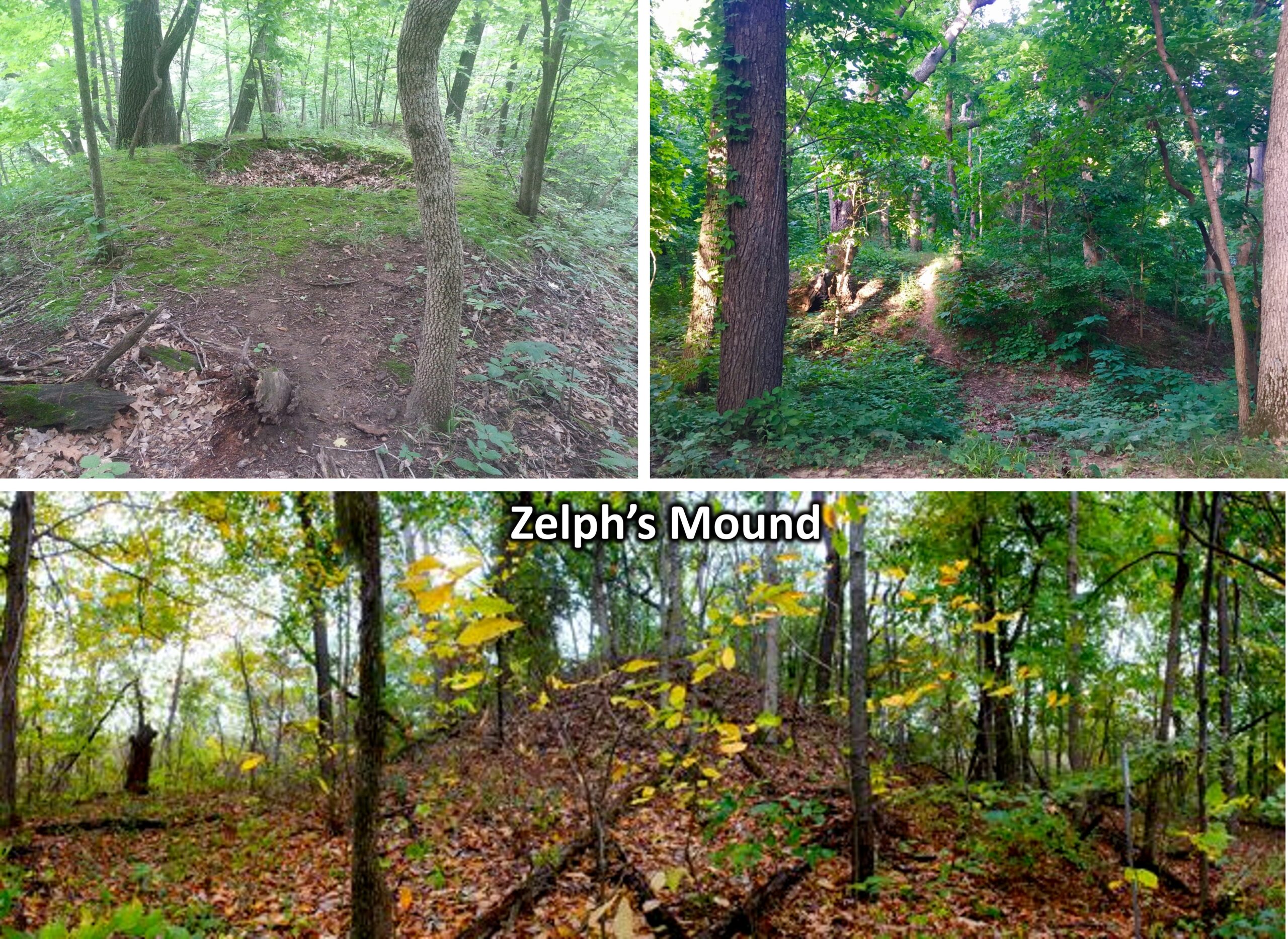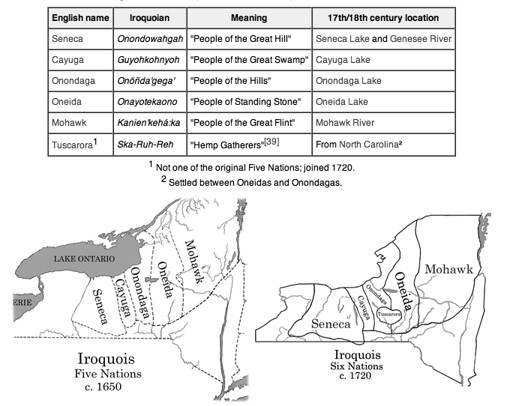Zelph’s Mound or Russell Naples Mound #8- Illinois
“The Naples Mound 8 (also Naples-Russel Mound 8 or Illinois Archaeological Survey #PK 335) is a Havana Hopewell culture mound site located in Pike County, Illinois three miles east of the city of Griggsville. The mound was given the name Naples Mound #8 in 1882. The mound was listed on the National Register of Historic Places in 1975.
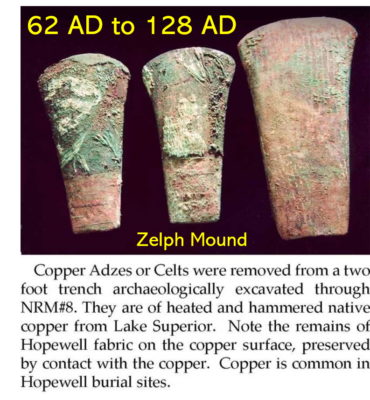
First Recorded Visits by Local Settlers
Illinois was made a state in 1818 and white settlers came in and opened some of the burial mounds in the former Native American lands. Judge John G. Henderson of Winchester, Illinois, was impressed by beautifully carved stone smoking pipes a friend showed him which were obtained from burial mounds in Naples, Illinois. Accordingly, he and a Mr. Merrill, in 1876, did some excavations and documentation of some of the Naples mounds in which were found a raccoon and a turtle pipe, copper axes, and human skeletal remains. Henderson also mapped the location of fifteen mounds near Naples, including Naples Mound #8. A map he made shows Naples Mound #8 as being a mile south of Valley City, Illinois and across the Illinois River from Naples, Illinois
Being impressed with mound #8, Henderson illustrated an Eagle pipe unearthed from the mound about 40 years earlier by a Daniel Burn, John W. Windsor and others. In describing Naples Mound #8 Henderson states, “On the right bank of the Illinois river about 300 yards below [south of] Griggsville Landing, rises a lofty bluff fully 300 feet above the level of the river. On the summit is a beautiful, oval mound, 150 long, 92 feet wide in the middle, and 25 or 30 feet high. … within a radius of 5 miles from Naples there are a least fifty mounds, very few of which have ever been opened”. After Henderson wrote an article describing the Naples mounds and the relics found in them, the Smithsonian Institution, in December 1879 began a thorough exploration of them, furnishing six laborers to help with the excavations.[9] Afterwards, Henderson authored the article describing the results in the Smithsonian Annual Report.[10]
Rediscovery of the Mound
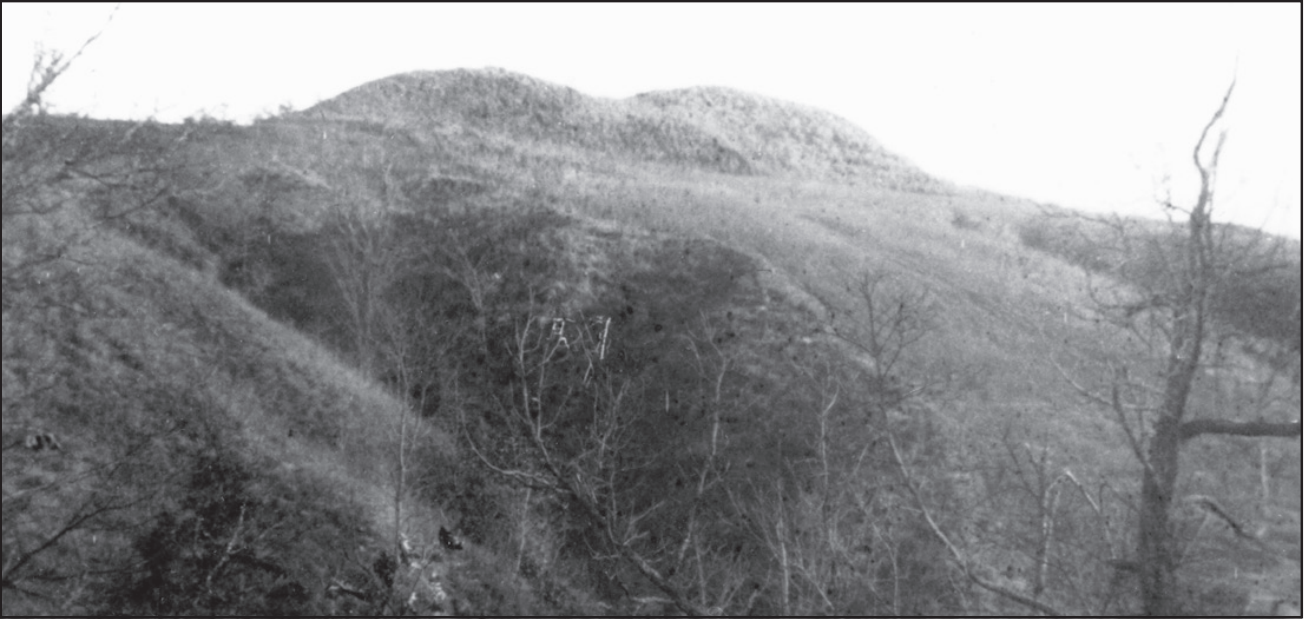
The mound was forgotten after 1882 and no records of visits have been found until 1974. Due to the Central Illinois Expressway bridge being planned across the Illinois River, the river bluffs were again visited by archaeologists. A team of graduate students from Northwestern University led by Archaeology Professor Jane E. Buikstra combed the bluffs of the Illinois River a mile South of Valley City, Illinois mapping burial mounds. They located an extraordinarily large mound and were excited to inform local historian, Warren Winston, about it. James Bradley, a Mormon Historian from Utah, who had been searching for Zelph Mound for 25 years, visited Warren Winston the day after Professor Buikstra’s visit and the connection was made.
The Zelph Mound, was re-identified using historic journals, historic landmarks and mound surveys. The archaeological name Naples Mound #8, which archaeologist Henderson had given it over ninety years earlier, was changed by Professor Buikstra in 1974 to Naples-Russell Mound #8 (RN8). The name “Russell” was added due to the mound being on private land owned by a Mr. Roy Russell. Shortly after that event, in 1975, Buikstra applied to have the mound placed on the National Register of Historic Places. Seven years later, in 1988, The State of Illinois purchased 280 acres of Illinois River frontage land, including the mound.” Source

“A Hopewell culture mound site is located in Pike County, Illinois three miles east of the city of Griggsville. The mound today is known as Naples-Russell Mound #8, or Zelph Mound. Dated 62 AD to 128 AD.” Thomas E. Emerson, PhD. Principal Investigator, Survey Director, and State of Illinois Archaeologist. GPS 39.693399, -90.648772 It is part of the Havana Culture of the Hopewell.

Leaders Witness of Zelph and where he was buried
“The visions of the past being opened to my understanding by the Spirit of the Almighty I discovered that the person whose Skeleton, we had seen was a white Lamanite, a large thick set man, and a man of God. His name was Zelph. He was a warrior and Chieftain under the great prophet Onandagus, who was known from the eastern sea, to the Rocky Mountains. The curse was taken from, Zelph or, at least, in part. One of his thigh bones was broken by a stone flung from a sling, while in battle, years before his death. He was killed in battle, by the arrow found among his ribs, during a great struggle with the Lamanites.” (Joseph Smith Papers Letterbook 2)

A scientific excavation of this mound was carried out in 1990 by The University of Illinois at Urbana-Champaign, in cooperation with the Center for American Archaeology at Kampsville, Illinois. The dig was funded by the Illinois Department of Transportation and supervised by archaeologist, Ken Farnsworth. The artifacts found during the excavation confirmed the mound to be a Hopewell burial mound, dating from 100 B.C. to 300 A.D. The artifacts are now located in the Illinois State Museum.
From the volume titled History of the Church Volume 2: pp.79-80, we read about an ancient altar of the Nephites found on top of Zelph Mound. In LDS Church History we also hear about a similar ancient altar found near Adam-Ondi-Ahman in Missouri. In Orson F. Whiney, Life of Heber C. Kimball, page 209, we read; “The Prophet Joseph called upon Brother Brigham, myself and others, saying, “Brethren, come, go along with me, and I will show you something,” He led us a short distance to a place where were the ruins of three altars built of stone, one above the other, and one standing a little back of the other, like unto the pulpits in the Kirtland Temple, representing the order of three grades of Priesthood; “There,” said Joseph, “is the place where Adam offered up sacrifice after he was cast out of the garden.” The altar stood at the highest point of the bluff. I went and examined the place several times while I remained there.”
In another account of the History of Church 3:35 it says, “we arrived at Colonel Lyman Wight’s home. He lives at the foot of Tower Hill (a name I gave the place in consequence of the remains of an old Nephite altar or tower that stood there), where we camped for the Sabbath.”
Today’s Adam-Ondi-Ahman is just a little over 200 miles from the location of Zelph Mound in Illinois, both of which fit within the geography of the Heartland Model of The Land of Zarahemla.
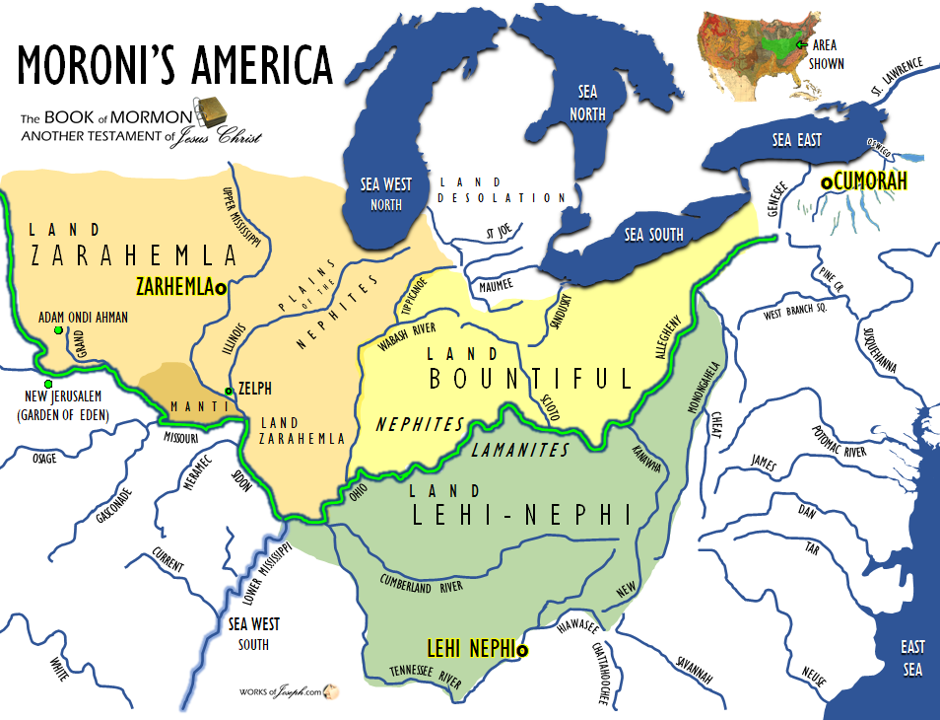
Remarkably, items discovered in the Zelph Mound area fit precisely within the parameters of the Book of Mormon historical chronology. (100 B.C. to 300 A.D.) This general collection of evidence points to a strong possible North American Book of Mormon geographic location.
According to Wilford Woodruff, “I brought the thigh bone to Missouri. I desired to bury it in the Temple Block in Jackson County; but not having this privilege, I buried it in Clay County, Missouri, near the house owned by Col. Arthur and occupied by Lyman Wight. The arrowhead referred to is now in the possession of President Joseph F. Smith, Salt Lake City, Utah.” Wilford Woodruff Journal Page 41.

“While on our way we felt anxious to know who the person was who had been killed by that arrow. It was made known to Joseph that he had been an officer who fell in battle, in the last destruction among the Lamanites, and his name was Zelph. This caused us to rejoice much, to think that God was so mindful of us as to show these things to His servant. Brother Joseph had enquired of the Lord and it was made known to him in a vision.” Life of Heber C. Kimball, by Orson F. Whitney


Zelph was a warrior, a chieftain, an officer, a man of God, a thick set man, and a white Lamanite who had the curse removed from him. He fought for the Nephites in one of the last battles between the Nephites and Lamanites, and served under the Prophet Onandagus, who was known from Hill Cumorah to the Rocky Mountains. (See History of the Church 2:79-80) Joseph Smith Papers Link Here:
We will consider a possible scenario of where Zelph may fit into the history of the Book of Mormon, by using information from journals, scriptures and other quotes. (This is only speculation with our belief of Heartland Geography)
1. Zelph fought for the Nephites and died in one of the last battles with the Lamanites. This battle would have had to be in the Land of Zarahemla, near present day Valley City, Illinois as this is where Zelph was buried.
2. The beginning battle of the last battles between the Nephites and Lamanites began in Zarahemla near the Sidon River in 322 AD (Mormon 1:10). The last battle in the Land of Zarahemla was probably in 328 AD near the borders of the west sea. (Possibly Lake Michigan or Lake Erie. Mormon 2:6)

3. According to Joseph Fielding Smith, “In the Book of Mormon story the Lamanites were constantly crowding the Nephites back towards the north and east. If the battles in which Zelph took part were fought in the country traversed by the Zion’s Camp, then we have every reason to believe from what is written in the Book of Mormon, that the Nephites were forced farther and farther to the north and east until they found themselves in the land of Ripliancum, which both Ether and Mormon declare to us was the land of Ramah or Cumorah, a land of “many waters,” which “by interpretation, is large, or to exceed all.” This being true, what would be more natural then that Moroni, like his father Mormon, would deposit the plates in the land where the battles came to an end and the Nephites were destroyed? [The Mesoamerican Theory claims the final battles of the Nephites was somewhere in Mexico]. Joseph Fielding Smith “continues, This Moroni says he did, and from all the evidence in the Book of Mormon, augmented by the testimony of the Prophet Joseph Smith, these final battles took place in the territory known as the United States and in the neighborhood of the Great Lakes and hills of Western New York. And here Moroni found the resting place for the sacred instruments which had been committed to his care.” Joseph Fielding Smith. Doctrines of Salvation. There is not a greater confirmation from an Apostle than this.
4. In 327 AD, Mormon was now 16 years old and chosen to be the Nephite leader. (Mormon 2:1) In Mormon’s first battle, his army was afraid and headed toward the north countries to the city of Angola, which was probably still in the land of Zarahemla. Zelph may have been a contemporary of Mormon while together in the Land of Zarahemla.

The possible conclusion of where Zelph may fit into the historicity of the Book of Mormon is either, Zelph may have died in 322 AD before Mormon became the Nephite leader or, Zelph may have died in 327 AD in Mormon’s first battle against the Lamanites in the City of Angola before the Nephites went even farther north and east toward Cumorah. Of course, Zelph doesn’t necessarily have to have died where he was buried. His body may have been moved to a higher hill in the area out of respect.
Wilford Woodruff’s Warning to Historians
Joseph Smith’s account of the history of Zelph was recorded by Wilford Woodruff in the Documentary History of the Church. The following is President Woodruff’s testimony regarding the truthfulness of that history, particularly the events that transpired during Zion’s Camp: “I am now called to preside over the only Temple there is on the earth, built for the salvation of the living and the dead. There are but a few of us living who were in Zion’s Camp. I will here say that God has inspired me to keep a journal and write the history of this Church, and I warn the future historians to give credence to my history; for my testimony is true, and the truth of its record will be manifest in the world to come. All the words of the Lord will be fulfilled upon the nations, which are written in this book. Wilford Woodruff, His Life and Labors, Matthias F. Cowley
Notice how careful Woodruff was to preserve every detail about Zion’s Camp. As late as 1879 (while hiding from federal authorities and speaking at Kanab, Utah Territory) he was still relating the story: “Joseph had a vision which showed him this man’s name was Zelph who lived in the days of Onandagus (he was a Lamanite and was white), he was a great Warrior.” The Journal of L. John Nuttall, entry for March 9, 1879; Mormon Parallels: A Bibliographic Source © 2014 Rick Grunder
The name of Onandagus mentioned by Joseph, sounds very similar to Onondaga, one of the five Indian nations that comprised the Haudenosaunee or Iroquois Confederacy, located in New York. Haudenosaunee means “the people of the long house”. This confederacy assisted the United States in forming a similar government as the Iroquois. The tribe of Onondaga are native peoples of New York and are known to have built houses of timber. (Alma 19:17-18; 26:28-29). The Onondaga are also the leading tribe, or “fire keepers” of this current confederacy. Another people of the Haudenosaunee are the Oneida, which is strikingly similar to the Book of Mormon place name “Onidah”. (Alma 32:4; 47:5) It is also likely no coincidence that the Lamanite title of deity, “Great Spirit” is a native North American appellation. (Alma 18:4-5)
ONEIDA in the Book of Mormon
HILL ONIDAH ALMA 32:4; 47:5
ONIHAH 3 Nep 9:7
BURIED WEAPONS Alma 24:19
Author L. Taylor Hansen wrote intriguingly of a site in New York State: “On the authority of some older inhabitants of Onondaga, it is stated that on a ledge of rocks, about a mile south of Jamesville, (Near Syracuse and Oneida Castle) is a place which used to be pointed out by the Indians as a spot where the Great Spirit once came down and sat and gave good advice to the chiefs of Onondagas. That there are the prints of his hands and his feet, left in the rocks, still to be seen. In the former years the Onondagas used annually to offer, at this place, tobacco and pipes, and to burn tobacco and herbs as a sacrifice to the Great Spirit, to conciliate his favor and which was a means of preventing diseases.”
“Blood sacrifice was forbidden and replaced by the use of tobacco, today an important element in all traditional Native American ceremonies. Among many eastern tribes, East Star Man is regarded as the son of the Great Spirit, the Creator.” Wayne May, Christ in North America.
In 1927, Janne M. Sjödahl a Swedish immigrant and convert to the LDS church, wrote a book on one of the founding works in the area of Book of Mormon studies. In his book he said; “The Onondagas: These have special interest… It appears from this, that this warrior, Zelph, was an Onondaga, as well as a “white” Lamanite, and that the Onondagas (of New York), consequently must be of Lamanite lineage. It also appears that at least some of the mounds in the Ohio Valley were erected by the descendants of Lehi” J.M. Sjodahl, An Introduction to the Study of the Book of Mormon.
Perhaps the name Zelph is a masculine version of the Hebrew “zalaphah”, meaning “Raging Heat” – a fitting name for a zealous warrior. (Brown – Driver – Briggs – Gesenius Hebrew – Aramaic Lexicon, 2152, pg 273)
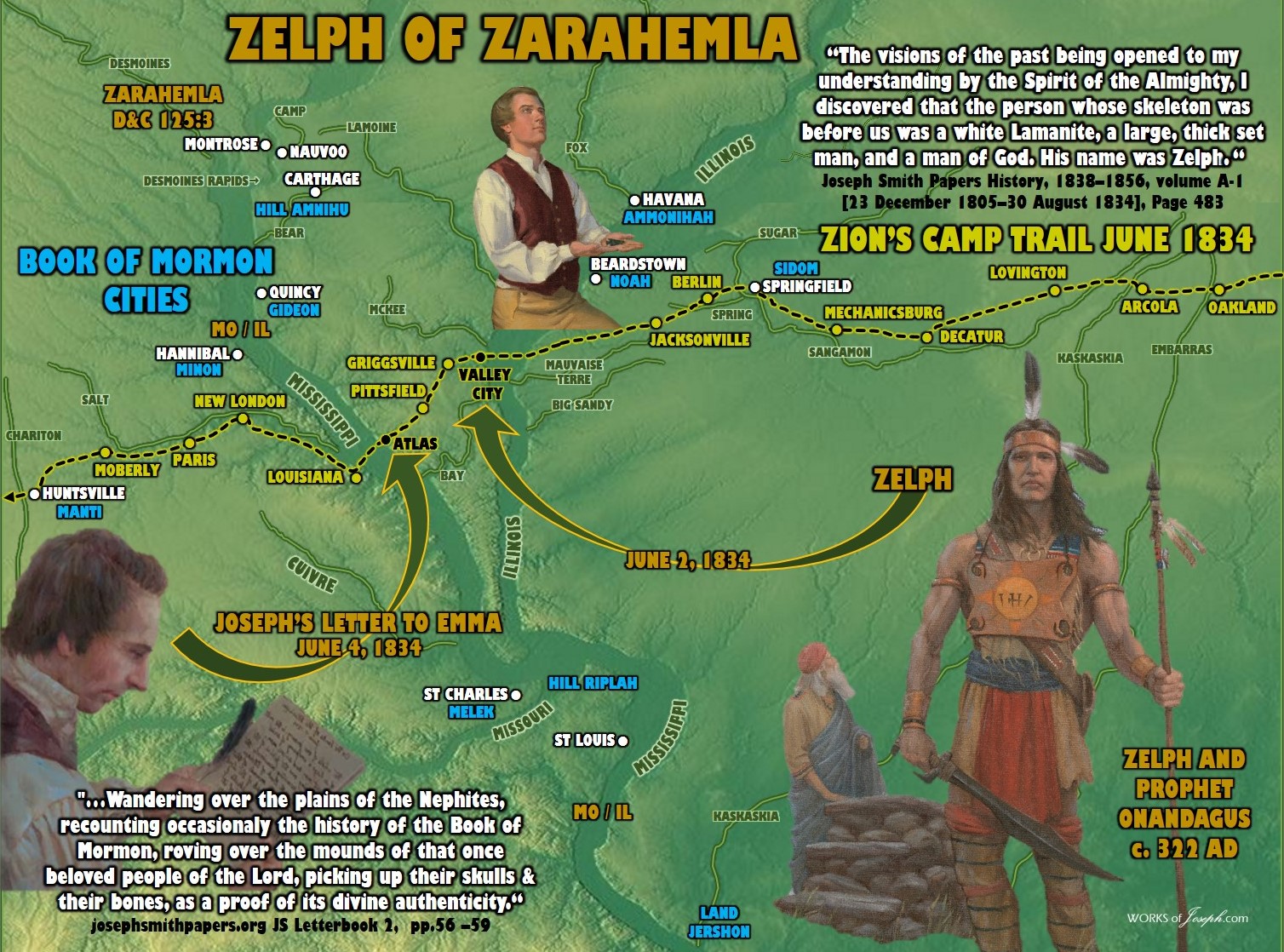

Joseph Smith Wrote, “On the banks of the Mississippi, June 4th. 1834. My Dear Companion, I now embrace a few moments to dictate a few words that you may know how it is with us up to this date. We arrived this morning on the banks of the Mississippi, and were detained from crossing the river, as there was no boat that we could cross in, but expect a new one to be put into the river this evening, so that we are in hopes, to be able to cross tomorrow, and proceed on our journey. A tolerable degree of union has prevailed among the brethren or camp up to the present moment, and we are all in better circumstances of health apparently than when we started from Kirtland… The whole of our journey, in the midst of so large a company of social honest men and sincere men, wandering over the plains of the Nephites, recounting occasionaly the history of the Book of Mormon, roving over the mounds of that once beloved people of the Lord, picking up their skulls & their bones, as a proof of its divine authenticity… Signed, Joseph Smith Jr.” Joseph to Emma, 6.4.1834. Retained copy in handwriting of James Mulholland, Joseph Smith Letterbook 2, pp. 56–58, LDS Church Archives
In this personal love letter to Emma, Joseph says Zion’s Camp traveled on the same plains as those Nephites of the Book of Mormon. Joseph also explains these “once beloved people of the Lord” built these mounds. These are the same lands as the Hopewell Mound Builder Civilization that thrived in the heartland of the United States from 100 BC to 300 AD according to archeologists and scientists.
What better description from Joseph Smith than “the plains of the Nephites” when speaking about the heartland of North America. Imagine rolling hills, vast prairies, rivers, lakes, streams, majestic meadows, areas of wilderness, pastures, flatlands and timberland, just as spoken of in places of scripture. “…And it came to pass that when they had come to the city of Nephihah, they did pitch their tents in the plains of Nephihah, which is near the city of Nephihah.” Alma 62:18 (see D&C 117:8, Ether 14:15). It seems very unlikely that you would confuse these plains with the jungles of South and Central America.
“Better equipped than most of the Zion’s camp recruits, Wilford (Woodruff) owned his team, wagon, and personal armaments. Appointed a teamster, he had charge of sixteen horses. Like the others, he furnished his own arms, but unlike some with antiquated weapons, he carried a rifle, sword, dirk, and pistol. Joseph asked for the sword, and Wilford made him a gift of it.” Thomas G Alexander; Woodruff Autobiography page 41. Joseph Smith carried the sword shown in the “letter” painting above, during Zion’s Camp and later as Lieutenant General of the Nauvoo Legion. On his way to Carthage to become a martyr, the Prophet gave this sword to his friend, bishop, and bodyguard, Joseph Bates Noble.
Zion’s Camp brethren said they picked up the bones of ancient Nephites on the plains. From the mound they visited just a day or so earlier, they brought with them some bones of Zelph in their wagon. “Some of his bones were brought into the Camp and the thigh bone which was broken was put into my wagon and I carried it to Missouri.” Wilford Woodruff’s Journal, ed. Scott G. Kenney, 1:10.
“We took the leg and thigh bones and carried them along with us to Clay County. All four appeared sound.” Heber C. Kimball, Times and Seasons, 6:788.
“…We came to the bones of an extraordinary large person or human being, the thigh bones being 2 inches longer from one Socket to the other than of the Prophet who is upwards of 6 feete high which would have constuted some 8 or 9 feete high.” Moses Martin Diary, LDS Church Archives, spelling not corrected).
Eldred G. Smith said, “As we look into the record, we find that after the first visit to the Hill Cumorah, Joseph told the story of the history of the early American inhabitants to his family. His mother wrote: “From this time forth, Joseph continued to receive instructions from the Lord, and we continued to get the children together every evening for the purpose of listening while he gave us a relation of the same. I presume our family presented an aspect as singular as any that ever lived upon the face of the earth—all seated in a circle, father, mother, sons and daughters, and giving the most profound attention to a boy, eighteen years of age.” This sounds like the first family home evening of this dispensation.
Then she continued to say: “We were now confirmed in the opinion that God was about to bring to light something upon which we could stay our minds, or that would give us a more perfect knowledge of the plan of salvation and the redemption of the human family. This caused us greatly to rejoice, the sweetest union and happiness pervaded our house, and tranquility reigned in our midst. During our evening conversations, Joseph would occasionally give us some of the most amusing recitals that could be imagined. He would describe the ancient inhabitants of this continent, their dress, mode of traveling, and the animals upon which they rode; their cities, their buildings, with every particular; their mode of warfare; and also their religious worship. This he would do with as much ease, seemingly, as if he had spent his whole life among them.” Lucy Mack Smith, History of Joseph Smith by His Mother, pp. 82-83. This was before he received the plates. He must have received this by revelation, for he knew the whole story of the content of the record that is now the Book of Mormon. He had had five long visits with Moroni, and his mother says he received many revelations.” Eldred G. Smith, Conference Report, October 1967, pp. 82-84
Orson F. Whitney said, “From the time Father Bosley located near Avon, he found and plowed up axes and irons, and had sufficient to make his mill irons, and had always abundance of iron on hand without purchasing. In the towns of Bloomfield, Victor, Manchester, and in the regions round about, there were hills upon the tops of which were entrenchments and fortifications, and in them were human bones, axes, tomahawks, points of arrows, beads and pipes, which were frequently found; and it was a common occurrence in the country to plow up axes, which I have done many times myself.
I have visited the fortifications on the tops of those hills frequently, and the one near Bloomfield I have crossed hundreds of times, which is on the bluff of Honeyoye River, at the outlet of Honeyoye Lake.
In that region there are many small deep lakes, and in some of them the bottom has never been found. Fish abound in them. The hill Cumorah is a high hill for that country, and had the appearance of a fortification or entrenchment around it. In the State of New York, probably there are hundreds of these fortifications which are now visible, and I have seen them in many other parts of the United States. Readers of the Book of Mormon will remember that in this very region, according to that sacred record, the final battles were fought between the Nephites and Lamanites. At the hill Cumorah, the Nephites made their last stand prior to their utter extermination, A. D., 385. Thus was Heber preaching the Gospel to the Gentiles, above the graves of the ancients of Israel, whose records with the fullness of that Gospel, and the relics of their prowess and civilization, were now whispering from the dust.” Life of Heber C. Kimball by Orson F. Whitney Mounds at Cumorah
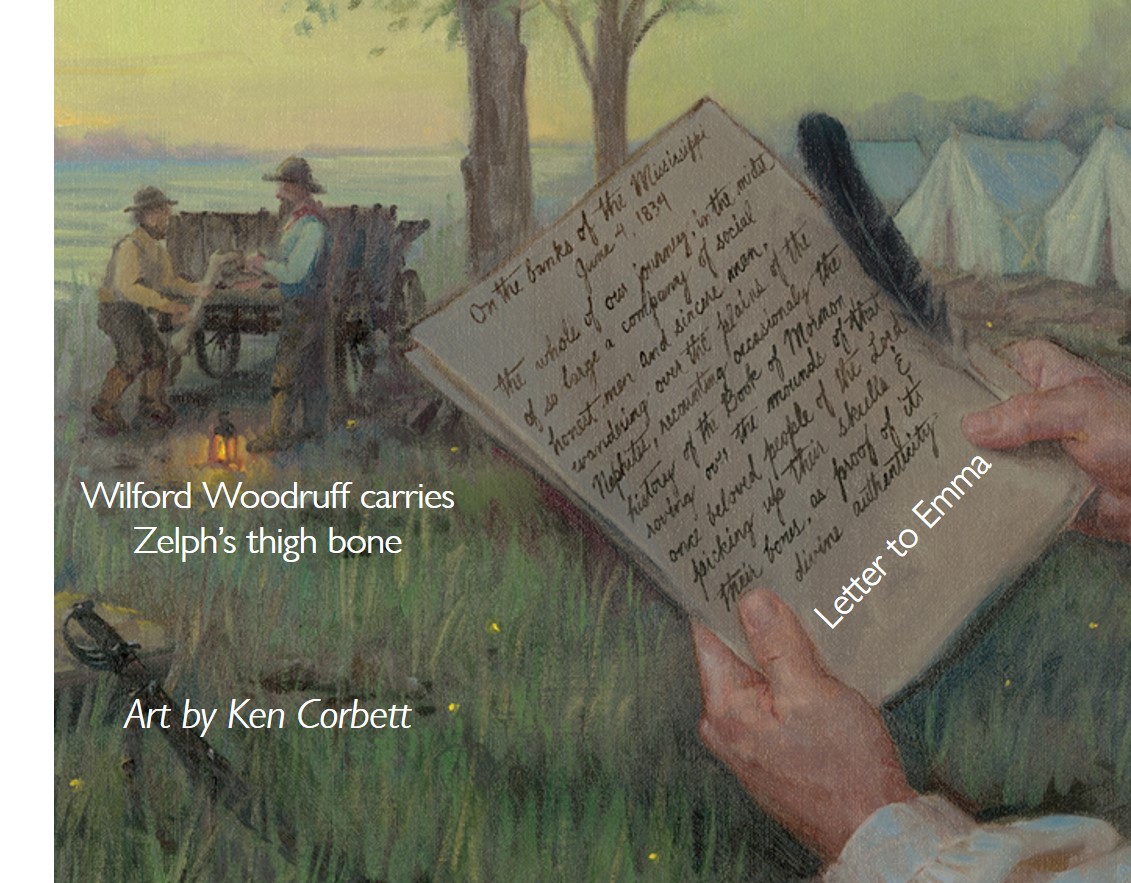



Art by Val Chadwick Bagley

